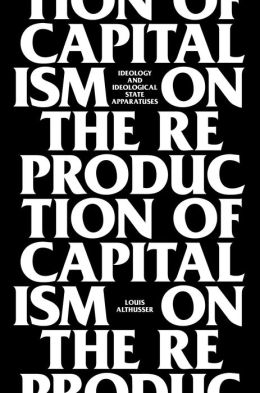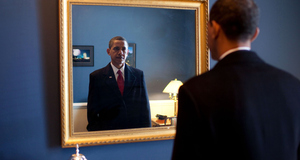From Discussions VOL. 10 NO. 1Race as a Material Ideology
IN THIS ARTICLE
KEYWORDS
INTRODUCTIONThe persistence of racism within the working class is a fundamental problem for any Marxist analysis of race, and there have been several attempts to solve this problem within the Marxist tradition. Most traditional understandings, however, turn out to be theoretically inconsistent and lacking in terms of explanatory power when confronted with the historical realities of Italian, Irish, and African-American labor relations in the early 20th century. I will argue that bringing Louis Althusser's theories of the state and ideology to bear on the problem of working-class racism can offer a better historical understanding than traditional explanations. HISTORICAL ATTEMPTSOne traditional analysis, which can be placed within the orthodox school of Marxism, simply "subsumes racism under the general rubric of working-class exploitation" (West). This classical analysis emphasizes the economic above all other factors. The relations of production determine everything else, and the extraction of surplus value via wage labor is the primary form of exploitation. Racism is seen as nothing more than an effective divide-and-conquer tactic of the capitalist class, and any focus on anti-racist work simply distracts from the class struggle that is the 'true' nature of history.
This theory, however, has significant shortcomings. For one, if capitalism is understood only "according to the abstract economic logic described in Capital" it does not require any divisions in the working class (Moufawad-Paul). In fact, divisions could be detrimental to capital because a divisions within the working class along race, gender, or other lines may lead to struggles (anti-racist, feminist, etc.) that can slow down or undermine the "dayto-day functioning of capital" (Moufawad-Paul). Historically, divisions within there is no requirement in the structure of capitalism that the working class be kept divided. Understanding racism as nothing more than a divide-and-conquer tactic ignores the fact that capital has no inherent need to divide the working class. A more sophisticated Marxist analysis "claims that racist practices from xenophobic attitudes that are not strictly reducible to class exploitation" (West). Seen this way, "racist attitudes have a life and logic of their own" simply a continuation of xenophobic attitudes that are always present in human groups, then "What prevents all cases of the affinity-disaffinity dialectic from being translated into racism? What prevents all national formations, all caste formations, all ethnic formations, all class formations from becoming racial formations at the same time?" (Liem 39) There is something historically explanation. Racism, nationalism, caste systems, and ethnicity all operate by logics of inclusion and exclusion, but none of these social formations are identical in formation or operation. The xenophobic explanation allows for an understanding of racism as more than a capitalist conspiracy while being overly reductionist by treating all exclusionary social formations as the same. The most common Marxist answer for racism is the phenomenon of "false consciousness" (Willhelm 106). In this explanation, the working class suffers from an "illusory perception" and they "believe in both racism and the property rights of capitalists" (Willhelm 106). This contains elements of the previous two explanations considered. Like xenophobia, but unlike 'divide-and-conquer,' it does not present racism as a conspiratorial invention by capitalists. It allows for the historical development of racist attitudes independently from (or at least not directly invented by) the ruling class. Like both of the previous explanations, however, false consciousness still toes the orthodox Marxist line that proletarian identity is the 'truest' identity of members of the working class and that workers who act in racist ways simply do not understand their true nature as a member of the proletariat. The false consciousness explanation of racism blames "the very victims of capitalist oppression and exploitation for their own fate" (Willhelm 106). False consciousness supposes that the working class does not understand their "real" conditions, and that they believe in the "false" conditions of racism. The second problem is an analytic error: in appealing to false consciousness, Marxists simply replace one noneconomic variable (racism) with another (false consciousness). In order to "incorporate racism in what is, supposedly, a materialistic analysis, they [analysts who employ false consciousness] ultimately place less reliance upon the economics of a class struggle" (Willhelm 107). False consciousness is reductionist in the same manner as the xenophobic analysis: "false consciousness" reduces racism, sexism, nationalist, etc to "false" ideologies which are not "real." False consciousness as a theory has no political solution for dealing with these ideologies other than telling workers to stop believing in them because they are "false." Most importantly, all three of these explanations of racism have no compelling answer for the following question: "what is to be done with the noneconomic variable of race within the framework of an economic analysis conceding the presence of racism transcending class lines?" (Willhelm 105). Marxism is a materialist framework, but all of these analyses explain racism by putting more emphasis on ideological factors than on material conditions. As such, they offer no theoretically consistent answer for the question "If history is the story of class struggle, how engage in behavior that actively divides them against the bourgeoisie? This is the fundamental question that a Marxist theory of racism must address, and a question that "divideand-conquer," xenophobia, and false consciousness fail to answer satisfactorily. A DIFFERENT DIRECTIONBuilding upon the work of Louis Althusser offers a much more fruitful way to reconcile Marxism and working-class racism. Instead of interpreting racism as false consciousness, it should be viewed through the lens of Althusser's theory of ideology. To develop that theory, Althusser offers an interpretation of the State in which he distinguishes between state power and state apparatuses, and divides the state apparatuses into the Repressive State Apparatus and Ideological State Apparatuses. According to Althusser, the Repressive State Apparatus contains "the Government, the Administration, the Army, the Police, the Courts, the Prisons, etc." while the Ideological State Apparatuses include, but are not limited to, religious institutions, educational institutions, the conventional family structure, the political system, and popular culture (Althusser 96). While there is a single Repressive State Apparatus and a multitude of Ideological State Apparatuses, what unites them all is that "the ideology by which they contradictions, beneath the ruling ideology" (Althusser 98). For Althusser, the state apparatuses (repressive and ideological) exist to facilitate "the reproduction of the relations of productions" (Althusser 101). One more key point from Althusser is necessary before constructing a theory of working-class racism on his ideas: Althusser claims that ideology always exists in a "material ideological apparatus" which prescribes "material practices" (Althusser 114). Furthermore, "there is no practice except by and in an ideology" and therefore "ideology has a material existence" (Althusser 115). This is Althusser's attempt to reconcile the materialism of Marxism with the supposed immateriality of ideology. If racism can be interpreted as an Althusserian ideology, it must have a material existence in the practices of the state apparatuses which will (1) show how racism serves to reproduce the relations of production; and (2) explain the persistence of working-class racism in a more compelling way than previous Marxist theories of racism. It is easy to see that historically, racism has been present in the Repressive State Apparatus. Legally enforced chattel slavery was the expression of racism in 19th century legal and judicial structures. In her book Manifest Destinies: The Making of the Mexican American Race, Laura Gomez argues that legislation and judicial decisions about citizenship were instrumental in creating "Mexican American" as a racial category. The Johnson-Reed Act of 1924, which established immigration quotas based on race and nationality, was at least of its labor supply (Esch 180) and can be seen as a material expression of racism in the Repressive State Apparatus. The cyclical importation and deportation of Mexican immigrants by government agencies, often motivated by business's desires about the labor force ("20th Century Immigration"), is another example of material consequences of racial ideology in the government and courts. Race as an ideology, then, clearly has a material existence in the state apparatuses. But, can it deal with the problem of working-class racism? At this point, Althusser's perspective is no more revealing than false consciousness because no light has been shed on how racism actually functions as an ideology. It has not been shown how racism's material existence reproduces the relations of production. First, it is clear that competition among the working class for jobs, whether it is along racial lines or not, reinforces one of the essential notions of capitalism, "the transformation of the worker into a thing through the purchase and sale of his labour power as a commodity" (Callinicos 21). Labor competition, whether racially motivated or not, facilitates the reproduction of the relations of production. However, while labor competition and racism are correlated, this is not a direct relationship and labor competition is not the entire story. David Roediger best problematizes the relationship, in the context of Irish immigrant labor, by asking "why did they [Irish immigrant workers] choose to stress competition with Black workers instead of with other whites?" (Roediger 147). In both skilled and unskilled labor markets, "the Irish had far more German-American competitors than Black ones" (Roediger 147) but Irish workers still chose to compete primarily with black workers. Historical evidence denies any suggestion that racism is solely the product of labor competition. A possible solution lies in the relationship between blackness and whiteness and the correlation of upward social mobility with this relationship. Here, Althusser's idea of different "modalities of materiality" (Althusser 114) is necessary. As Thomas Guglielmo argues in White On Arrival, being considered white gave Italian immigrants greater privilege and more of a chance for upward social movement than African Americans, even if Italians were considered inferior to Anglo-Saxon whites (Guglielmo 10). While Italian immigrants may have been impoverished day laborers whose immediate material conditions were roughly equivalent to those of unskilled black laborers, the possibility of upward movement, which would come with very real economic consequences, can be seen as a material privilege of whiteness (or off-whiteness). If upward social mobility is recognized as a material privilege of whiteness, albeit in a different "modality of materiality" than higher wages, membership in unions, or access to skilled jobs, the idea that whiteness comes with material privileges is not refuted by unskilled white and black laborers living in similar material conditions in a given time and place. Even if Germans were their more direct competitors at the time, Irish immigrants stood to gain materially by placing themselves on the opposite side of blackness. In the racial hierarchy of early 20th century America, with "black" clearly at the bottom and "white" clearly at the top, even themselves on the other side of "black" was the way towards Gunnar Myrdal's argument that for most immigrants, the "development of prejudice against the Negroes is usually that many European immigrants learned when they got off the boat was the term 'nigger'" (Guglielmo 35); that in oral interviews many Italian Americans often contrasted "themselves explicitly with African Americans" (Guglielmo 12); that "dark skinned" people, whether dark skinned Italians, African Americans, or otherwise, were often the victims of the harshest racial prejudice (Guglielmo 28); that Chicago "neighborhood boundaries seem to have been a lot less permeable when it came to African Americans" (Guglielmo 51); that it was much easier "for the Irish to defend jobs and rights as 'white' entitlements instead of as Irish ones" groups and European immigrants deteriorated over time" (Guglielmo 56). Even if Italians, Irish, and other immigrants did not initially see themselves or were seen as white, they were certainly not black. In contrast to African Americans, on the racially keyed map of New World political identity" (Jacobson 255).Continued on Next Page » Suggested Reading from Inquiries Journal
Inquiries Journal provides undergraduate and graduate students around the world a platform for the wide dissemination of academic work over a range of core disciplines. Representing the work of students from hundreds of institutions around the globe, Inquiries Journal's large database of academic articles is completely free. Learn more | Blog | Submit Latest in Sociology |


















